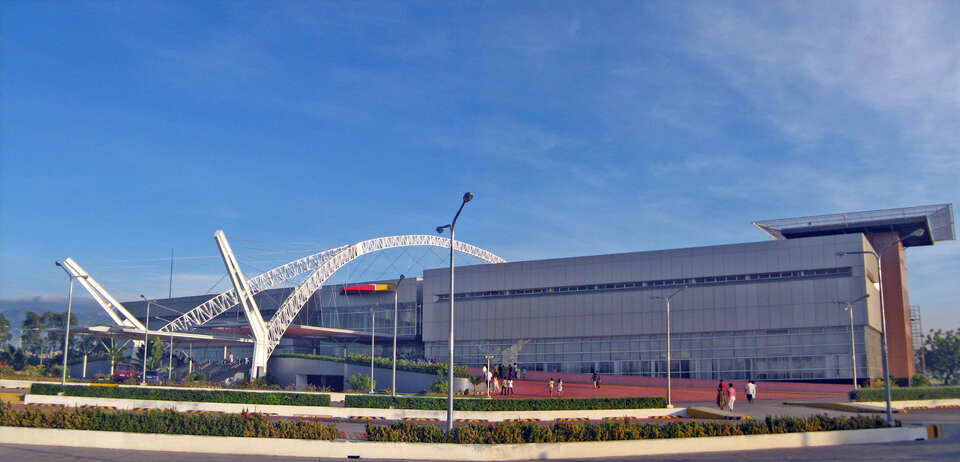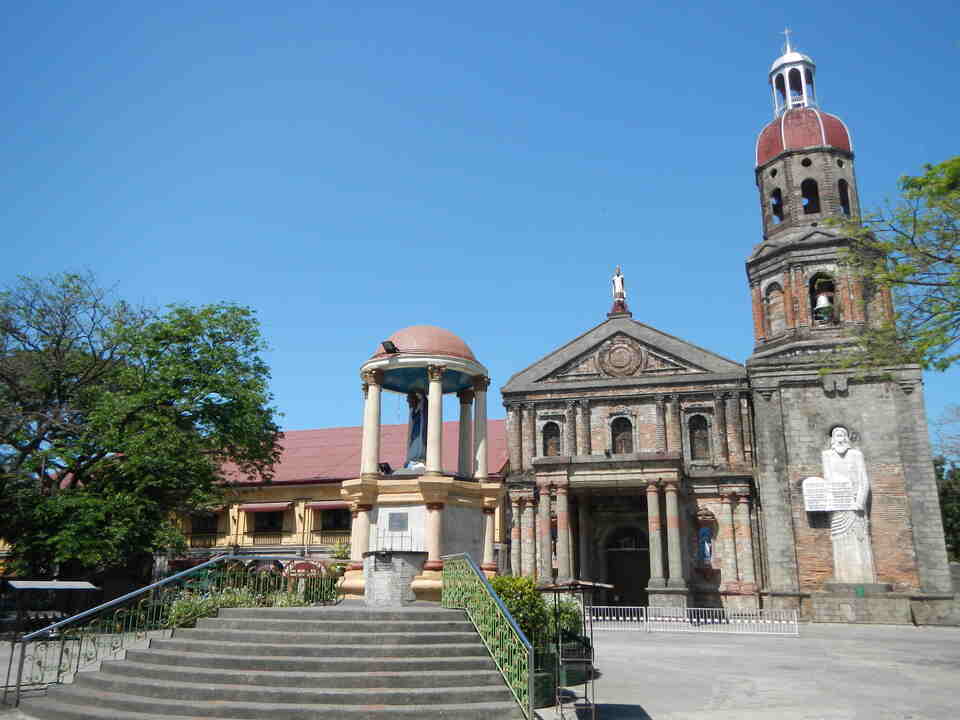Have you ever heard of a place that dances to the rhythm of its own beat? That’s Mandaue City. A city sitting snugly in the heart of the Philippines, right in the vibrant island of Cebu. This place, it’s not your average city, no sir! It’s like a funky cocktail of culture, history, and modernity, all shaken, not stirred.
You see, Mandaue isn’t just a city. It’s a living, breathing storybook. Each corner you turn, each street you wander, you’ll find tales whispering in your ear. From the towering, age-old churches to the bustling markets brimming with the sweetest mangoes you’ve ever tasted, every inch of Mandaue is a story waiting to be told.
But hey, I’m not just talking about the past. Mandaue is a city that’s got one foot in history and one foot striding into the future. It’s a hub of industry and innovation, where tech-savvy folks and traditional craftsmen work side by side. Now, isn’t that something?
So, what’s your flavor? Whether it’s century-old traditions you’re after or cutting-edge innovation, Mandaue’s got it all. But hey, don’t just take my word for it. Have you ever wondered what it’s like to live a day in the life of a Mandauenyo?
History of Mandaue City
Mandaue City holds a rich and varied history, which weaves a vibrant tapestry from its earliest days to the present.
Initially, the city started as a small settlement known as “Mantawi,” a native term for “mangrove,” reflecting the area’s lush mangrove forests. The community was primarily engaged in fishing and farming. Over time, the settlers began to trade with neighboring islands, and by the 16th century, Mantawi had developed into a thriving trading port.
In 1521, the famous Portuguese explorer Ferdinand Magellan arrived in the Philippines. Although his first encounter with the natives was peaceful, conflict soon arose. During the Battle of Mactan in April 1521, the indigenous leader Lapu-Lapu killed Magellan, marking a significant event in the history of Mandaue.
Transitioning into the 17th century, the Spanish colonizers began to exert their influence over the region. They renamed Mantawi to “Mandaue,” and it became a visita of the town of Opon, now known as the City of Lapu-Lapu. During this period, the Spanish missionaries converted the locals to Christianity, and they built several churches, including the St. Joseph Parish, which remains an iconic symbol of the city’s Spanish colonial past.
American Period
Moving forward to the American colonial period in the early 20th century, Mandaue experienced significant modernization. The Americans introduced public education and democratic governance, which led to the development of infrastructure and industries. Mandaue became a municipality in 1901 under the American regime.
Progressing to the post-World War II era, Mandaue continued to grow. The city’s location as a strategic trading hub between Cebu City and the northern parts of Cebu province served as a springboard for its economic expansion.
Lastly, in 1969, Mandaue was finally declared a city, marking a new chapter in its rich history. Today, Mandaue City remains a bustling industrial and commercial center, with its history acting as a testament to its resilience and growth.
What To Eat in Mandaue City?
Mandaue City presents a vibrant food culture that showcases the country’s diverse culinary heritage. Its cuisine is a delightful fusion of local and foreign influences, all harmoniously blending within a tropical setting.
Let’s start our gastronomic journey with Mandaue’s Lechon. The city takes pride in its Lechon, or roasted pig, known for its crackling skin and tender, flavorful meat. Cooked over charcoal for several hours, the pig is stuffed with local herbs and spices, creating a unique flavor that is distinctly Mandaue. This dish is usually the centerpiece of festivals and family gatherings.
Next, we move on to the city’s seafood cuisine. Mandaue’s coastal location provides a bounty of fresh seafood. Local chefs creatively transform these oceanic treasures into mouth-watering dishes. Grilled fish, or “Inihaw na Isda”, is a popular dish, marinated in a mix of vinegar, garlic, and local spices, then grilled to perfection. Another must-try seafood dish is Kinilaw, a Filipino version of ceviche, where raw fish is “cooked” in vinegar and mixed with onions, ginger, and chili.
Additional Food
In addition to seafood, Mandaue is famous for its street food. One iconic street food is “Puso”, or hanging rice. This is cooked rice wrapped in woven coconut leaves shaped like a heart, hence the name Puso. It’s often paired with barbecue skewers or Lechon.
Transitioning to desserts, Mandaue offers a variety of sweet treats. Bibingka, a rice cake made from glutinous rice, coconut milk, sugar, and eggs, is a popular delicacy, especially during the Christmas season. Another well-loved dessert is the “masareal”, a sweet and chewy candy made from crushed peanuts and sugar.
Finally, no Mandaue food tour would be complete without a taste of its local beverages. The city produces “tuba”, a traditional Filipino coconut wine. Locals harvest the sap from the coconut tree and ferment it to create this sweet, tangy, and slightly alcoholic drink.
Tourist Spots in Mandaue City
Mandaue City is a bustling metropolis that boasts a blend of rich history, vibrant culture, and modern attractions. Let’s embark on a virtual tour to discover the city’s top tourist spots.
First, we begin our journey at the Mandaue Presidencia. This historic site stands as a testament to the city’s colonial past. As you step into the chambers, you can feel an immediate sense of history sweeping over you. The building’s preserved Spanish architecture, paired with the stories of the city’s past leaders, truly brings Mandaue’s history to life.
Next, you cannot miss the remarkable St. Joseph National Shrine. Known for its intricate design and stunning architecture, this national shrine attracts tourists from all around the globe. As you enter the shrine, the powerful spiritual atmosphere will instantly captivate you. Whether you’re a devotee or a lover of architecture, St. Joseph National Shrine will not disappoint.
More Spots
Moving forward, we find ourselves at the city’s vibrant heart, the Plaza Complex. Here, you can witness the lively local culture firsthand. During the day, the plaza buzzes with activity, from families enjoying their leisure time to vendors selling a variety of local goods. As night falls, the place transforms into a vibrant hub of music, dance, and local performances, showcasing the city’s talent and culture.
For nature enthusiasts, the Cebu International Convention Center’s surrounding park is a must-visit. This green space provides a peaceful respite amidst the bustling city. Take a leisurely stroll, enjoy a picnic, or simply sit back and enjoy the beautiful landscape around you.
Finally, our tour wouldn’t be complete without a visit to the J Centre Mall. As one of the city’s largest shopping centers, the mall offers a wide array of local and international brands. Whether you’re on the hunt for the latest fashion trends, craving delicious cuisine, or looking for entertainment, J Centre Mall has it all.
People Also Read: Tourist Spots in Manila
Festivals and Events in Mandaue City
Mandaue City is a vibrant city teeming with cultural richness, and there’s no better way to experience its spirit than by participating in its many festivals and events.
Firstly, let’s talk about the city’s most notable celebration, the Mandaue City Fiesta. This event takes place every May, providing a vibrant showcase of Mandaue’s deep-seated devotion to St. Joseph, the Worker. An integral part of the city’s identity, this fiesta involves a myriad of activities such as fluvial parades, nightly cultural events, and a lively street dancing competition known as the Mantawi Festival.
Furthermore, the Mantawi Festival, held in conjunction with the city fiesta, pays homage to Mandaue’s rich historical and cultural heritage. It involves a grand parade where participants from different barangays adorn themselves in colorful traditional outfits and perform choreographed routines. The festival’s name, ‘Mantawi,’ stems from an old name for the city, highlighting its significance in the city’s history.
In addition, Mandaue also celebrates the Sinulog Festival every January, a grand spectacle that it shares with the nearby city of Cebu. This religious event commemorates the Filipino people’s conversion to Christianity and honors the Santo Niño, or the child Jesus. Both locals and visitors alike are swept up in the fervor of the festival’s religious processions, novena masses, and street parties.
Moreover, the city also hosts the Kugtong-Kugtong Music Festival. This unique event, typically held in November, serves as a platform for local and national bands to showcase their talent. It was named ‘Kugtong-Kugtong’ which means ‘linking’ or ‘connection,’ symbolizing the bringing together of musicians and music enthusiasts.
Conclusion
Just when you think you’ve seen all there is to see, Mandaue will give you a cheeky wink and show you something new. It’s a city that’s got stories to tell, adventures to offer, and a whole lot of heart. But it’s not just about the place, it’s about the people too. The Mandauenyo spirit, resilient and proud, is the real heart of the city.
So, here’s my take on Mandaue City. Now, it’s your turn. Are you ready to write your own chapter in the ever-evolving story of Mandaue? Because trust me, this city’s got a spot reserved just for you. Come on, don’t you want to see what the fuss is all about?


